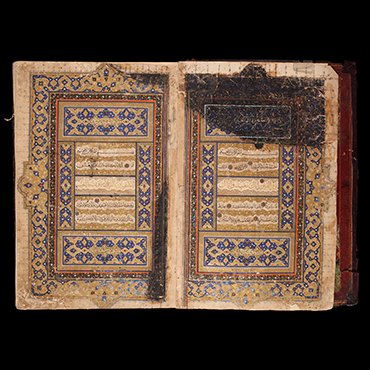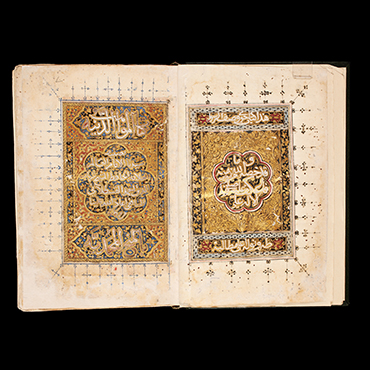The Khalidi Library — Jerusalem is nestled in the old city, just a few meters from the Haram al-Sharif and the Buraq Wall and Plaza. The library was established in AH 1317/1900 CE by Al-Hajj Raghib Al-Khalidi and reflects the dedication to knowledge that has been a hallmark of the Al-Khalidi family, whose members included judges, government officials, religious authorities, and scholars. Through various kinds of waqf—an endowment made to a religious, educational, or charitable cause—they made their personal libraries accessible to the wider public. The library collection and the buildings housing it are governed by a family endowment in perpetuity (waqf dhurri). Through the years, many men and women of the family have supported these efforts with donations of manuscripts and monies. Together, their contributions have made this library one of the largest private manuscript collections in the Arab world, an enduring and invaluable resource that continues to welcome readers and researchers from around the globe.

The library’s complex of three buildings is located on Tariq Bab al-Silsilah. The oldest part is the turbah (tomb) and prayer chapel of Amir Husam al-Din Barkah Khan (d. AH 643/1246 CE), who helped recapture Jerusalem from the Crusaders. Since AH 1317/1900 CE it has housed the library’s manuscript collection. An annex nearby hosts the library’s printed holdings, offices, and residences for visiting scholars. A third building is the library custodian’s residence. All are part of the Al-Khalidi family endowment. In the face of Israeli occupation and settler aggression, the library remains open to the community and committed to public service, honoring the intentions of its benefactors.
Al-Mawahib al-Laduniyah bi-al-Minah al-Muhammadiyah
(Life of the Prophet) (Facsimile)
of Ahmad bin Muhammad al-Qastalani
This important manuscript is part of a two-volume set containing a text by the scholar Ahmad bin Muhammad Qastalani, who also wrote an extensive commentary on the canonical hadith collection, Sahih al-Bukhari. This particular work focuses on the life and teachings of Prophet Muhammad (pbuh).
The manuscript also bears traces of its history in the Al-Khalidi family—on the first page an inscription from AH 1205/1790 CE records its endowment by Al-Hajj Muhammad Sun‘ullah al-Khalidi to his sons, while a later ownership note and seal dated AH 1276/1859 CE mentions the manuscript belonged to Ibrahim al-Khalidi.
Due to concerns about removing the library’s holdings from Jerusalem, it was decided to display four replicas to represent the treasures of the Khalidi Library — Jerusalem at the Biennale.
Rabi’ al-Awwal 18, 917 AH/June 24, 1511 CE
Copied by Taqi al-Din ‘Ali bin ‘Ali al-Bahnasi al-Shafi‘i
Gold and ink on paper with leather binding, h. 27.5 × w. 18.5 cm
Khalidi Library — Jerusalem, MS 499

